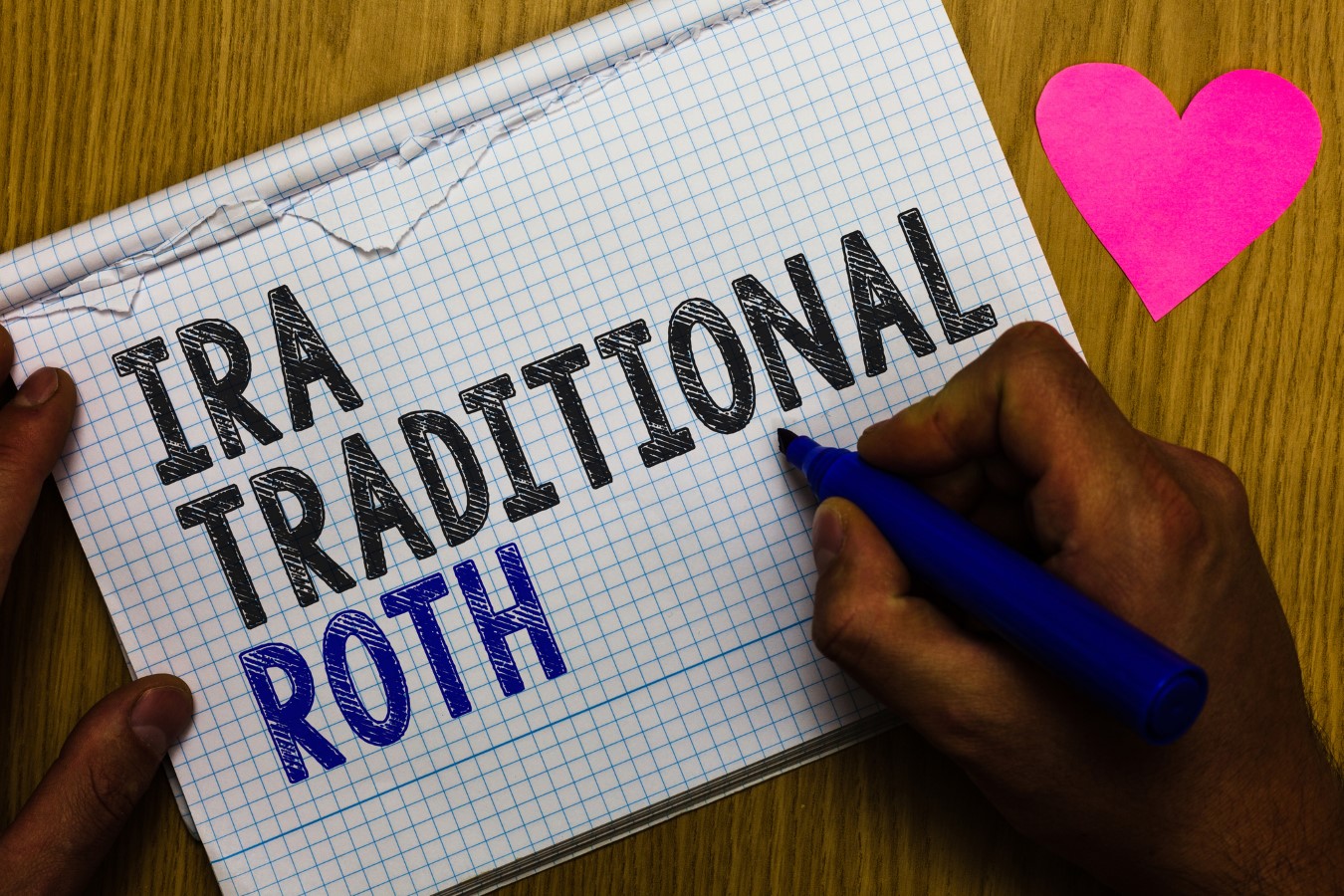Avoid These Costly IRA Mistakes Before They Wreck Your Retirement – Financial Freedom Countdown

Individual Retirement Accounts (IRAs) are one of the most important tools for securing a financially stable retirement. With contribution limits for tax year 2024 set at $7,000 ($8,000 for those over 50), these accounts are accessible to most Americans for retirement planning.
Yet, despite their relative simplicity, there are plenty of pitfalls investors face when managing their IRAs. Whether it’s choosing the wrong type of IRA, mishandling withdrawals, or misjudging tax implications, these mistakes can lead to unnecessary costs and missed opportunities. Here are some of the most common errors and how to avoid them.
Not Understanding the Different IRA Accounts

When choosing between IRA options, many focus on the two most common types: traditional IRAs and Roth IRAs. Both offer tax advantages, but in very different ways, so selecting the right one requires a close look at your financial situation.
Traditional IRAs allow for tax-deferred growth. You contribute pre-tax money, which grows tax-free within the account. Taxes are only due when you make withdrawals, penalty-free after age 59 ½. This makes traditional IRAs a great option when you’re in a higher tax bracket now than you expect to be in retirement—essentially, when you’re in your peak earning years.
Roth IRAs work the opposite way. Contributions are made with after-tax dollars, but the growth is tax-free, and no taxes are due when you make withdrawals in retirement. Roth IRAs are ideal if you’re currently in a lower tax bracket and expect to be in a higher one during retirement.
Roth IRAs are also great if you want tax diversification since many company retirement plans such as 401(k) are pre-tax accounts.
Ignoring Contribution Limits

First, ensure you’re eligible to contribute. For a traditional IRA, you or your spouse need earned income, while for a Roth IRA, income limits apply.
In 2024, for example, single filers with a modified adjusted gross income (MAGI) below $138,000 can contribute up to the annual limit ($7,000 if under 50, $8,000 if 50 or older). As MAGI reaches $138,000 and climbs toward $153,000, contribution limits phase out entirely.
If you contribute more than the annual limit to an IRA, you’ll face a 6% tax penalty on the excess amount for each year the over-contribution remains.
Additionally, you cannot contribute more to an IRA than your total earned income for that year. For example, if you earned $2,000 in 2024, that would be the maximum amount you could contribute to your IRAs for that year.
When contributing to both a traditional IRA and a Roth IRA in the same year, the contribution limit applies to the total combined contributions. For instance, if you’re 30 years old and have contributed $2,000 to a traditional IRA in 2024, the maximum amount you can contribute to your Roth IRA would be $5,000.
Waiting Until the Last Minute to Contribute

Many investors wait until the April 15 tax deadline to fund their IRA for the previous year. While this procrastination may seem harmless, it reduces the time their money has to grow.
Contributing at the start of the year gives your investments more time to compound, which can make a significant difference over the years. For example, although you can contribute on 15th April 2024 for the tax year 2023, making contributions on 1st Jan 2023 gives your money 15 additional months to grow in value.
If you don’t have a lump sum at the beginning of the year, set up automatic monthly contributions to maximize your investment time.
Assuming a Roth IRA is Always the Best Choice

Roth IRAs offer tax-free withdrawals, no required minimum distributions (RMDs), and other perks, but they aren’t always the optimal choice.
If you’re eligible for a tax deduction on traditional IRA contributions, and your current tax rate is higher than what you’ll face in retirement, a traditional IRA might actually be better. The upfront tax deduction could save you more money now.
Thinking You Have to Choose Between a Roth and Traditional IRA

Deciding whether to contribute to a Roth or traditional IRA doesn’t have to be an all-or-nothing decision. If you’re unsure of what your future tax rate will be, consider splitting your contribution. You can put half into a Roth IRA and the other half into a traditional IRA, giving you more flexibility down the road.
Leaving a Nondeductible IRA Contribution Sitting Idle

If your income disqualifies you from making a Roth contribution and your traditional IRA contribution isn’t deductible, don’t leave that money sitting in a nondeductible IRA forever. These accounts are subject to RMDs and ordinary income tax on withdrawals. Instead, consider using the “backdoor Roth” strategy, where you contribute to a nondeductible IRA and then quickly convert it to a Roth IRA.
Overlooking Tax Forms for After-Tax IRA Contributions

If you’ve made after-tax contributions to a traditional IRA, it’s crucial to file Form 8606 to properly account for those contributions. Failing to do so could result in tax complications. After-tax contributions also impact Roth conversions, making Form 8606 essential for accurate reporting.
Misjudging Taxes on a Backdoor Roth Conversion

A backdoor Roth IRA sounds like a tax-free move, but that’s not always the case. If you already have pre-tax IRA assets, the pro-rata rule comes into play, making part of your conversion taxable.
Be sure to understand how this rule works or consult a tax professional to avoid unexpected tax bills.
Thinking You Can’t Do a Backdoor Roth if You Have Traditional IRA Assets

While the pro-rata rule complicates backdoor Roth, there’s a workaround. You can roll your traditional IRA assets into your employer’s 401(k) plan, which removes those assets from the pro-rata equation. This move can make the backdoor Roth strategy more tax-efficient, even if it still incurs some taxes.
Make sure your 401(k) plan can accept rollover contributions.
Ignoring the Roth IRA Qualified Withdrawal Rule

Before withdrawing from your Roth IRA, it’s crucial to understand the Roth qualified withdrawal rule. Under this rule, you can only withdraw earnings tax-free after at least five years have passed since your first Roth IRA contribution, and you’ve reached age 59½ (or if the withdrawal is due to disability or death). This five-year period, often called the “five-year clock,” starts on January 1 of the year you made your first contribution to any Roth IRA.
Being familiar with this rule ahead of time is essential to avoid unexpected taxes or penalties. If you withdraw before age 59½ or without meeting the five-year requirement, you could face a tax bill and penalty. Plan accordingly so it doesn’t disrupt your financial goals.
Missing Out on Catch-Up Contributions

If you’re 50 or older and not planning to retire anytime soon, you can still benefit from making catch-up contributions, which allow you to contribute an extra $1,000 per year to an IRA.
For someone retiring at 65, this could add an extra $15,000 to their retirement savings—on top of nearly $90,000 in regular contributions, plus any potential gains. If you started saving late, these catch-up contributions offer a great opportunity to boost your retirement savings.
Overlooking IRA Contributions in Later Life

The SECURE Act removed age limits on traditional IRA contributions, which means you can continue contributing even into your golden years. The only requirement for contribution is that you should have “earned income” from working.
Social security, pension or income from your assets do not count as “income” for IRA contributions.
Related: Low-stress retirement jobs to keep you healthy and happy
Roth IRA contributions are especially advantageous for older investors who want to pass assets on to their heirs, as they come with no RMDs and offer tax-free withdrawals.
Traditional IRA contributions have RMDs so ensure you consider the overall tax impact.
Neglecting Spousal IRA Contributions

If you or your spouse doesn’t earn an income, you may assume you can’t contribute to an IRA. However, as long as the earning spouse has enough income to cover both contributions, you can fund an IRA for the non-earning partner. This can be a great way to maximize retirement savings for the household.
Not Contributing Due to Worries About Accessing Funds Early

Younger investors often avoid IRAs, believing they won’t have access to the funds until retirement. But that’s not true.
Roth contributions can be withdrawn anytime, tax- and penalty-free.
Traditional IRA earnings may be accessible under certain conditions. This flexibility makes contributing now a smarter choice than waiting.
Related: How to use SEPP to access your retirement funds early without paying a penalty
Treating Your IRA as Play Money

Many investors treat their IRAs as a speculative fund, dabbling into speculative investments or not considering their overall asset allocation. However, since an IRA is meant for long-term retirement savings, it’s wiser to focus on what is needed for retirement over the long term.
Missing Opportunities to Fill Portfolio Gaps

Company 401(k) plans typically have broad diversified stock and bond funds and even some specific funds focusing on international stocks.
Since I bonds can’t be purchased in your 401(k) or even your IRA, you can get inflation protected fixed-income by buying Treasury Inflation-Protected Securities (TIPS) in your IRA.
IRAs offer a broader range of investments and can be used to plug the holes in your asset allocation to complement your company retirement plan for a more balanced portfolio.
Placing Incorrect Assets in IRA

Investing in tax-sheltered assets like municipal bonds inside an IRA is redundant and inefficient since they are not subject to federal taxes and in some cases also exempt from state-income tax.
.You’re better off placing assets with high dividends like Dividend Aristocrats or real estate investment trusts (REITs) in your IRA to maximize the tax benefits.
IRAs can form an important part of your asset location strategy.
Triggering Taxes on an IRA Rollover

Rolling over a 401(k) to an IRA or one IRA to another IRA is straightforward, but if the funds don’t make it into the new IRA within 60 days, you could face taxes and early withdrawal penalties. Always ensure a direct transfer to avoid this costly mistake.
With a Direct Rollover the funds move directly from one custodian to another and the account holder never takes possession of the funds making it the best option.
Incorrect Information on Your Tax Forms

Whenever you deduct IRA contributions, the IRS needs accurate information to properly track your basis for future distributions and tax purposes. The financial institution managing your IRA is required to report your contributions for the tax year, often using Form 5498 for traditional or Roth IRAs.
While the custodian files this form with the IRS, you don’t need to submit it with your tax return. However, you should review it for accuracy, as errors on this form can lead to mistakes on your tax return.
Common errors include reporting contributions for the wrong year, failing to note a conversion from a traditional to a Roth IRA, receiving multiple Form 5498s, or inaccurate required minimum distribution (RMD) details.
Although your IRA custodian should verify this information, double-checking can help avoid costly mistakes. Additionally, if you make nondeductible IRA contributions, you’ll need to file Form 8606 so the IRS can track your basis in those contributions.
Keep a copy of all these forms for your records after confirming the accuracy. For example, Roth contributions can be withdrawn without penalty and these tax forms can help you segregate the contributions from earnings.
Incorrectly Calculating Your RMDs

Ensure you calculate your RMDs accurately and withdraw as per the IRS guidelines.
Many people don’t realize there are multiple tables for calculating required minimum distributions (RMDs). For example, if your spouse is the sole beneficiary and is more than 10 years younger than you, you can use a more favorable RMD table.
Not Reinvesting Required Minimum Distributions (RMDs)

Once you start taking RMDs at age 73, it’s tempting to spend the money, but if you don’t need it for living expenses, reinvesting it in a taxable account or a Roth IRA (if you have earned income) can help preserve your wealth.
Not Setting Up an IRA for Your Child

A child can only contribute to the IRA if they have earned income, and the annual contribution limits still apply.
The best way to set your child for success is to involve them in your business. If you have a rental property and you pay a landscaper to mow the lawn, pay your child to mow the lawn and that earned income can be invested in their IRA.
Or maybe you start a website for food recipes. You child can be involved in taking pictures of the dishes or uploading YouTube videos. Pay your child what you would pay your freelancer and now they have earned income to invest.
While both traditional and Roth IRAs can be opened for kids, a Roth IRA is usually the better option. Children typically have low earnings, so they’ll likely be in a higher tax bracket when they retire.
Money invested early in life has the potential to grow significantly. The power of compounding works its magic over time—meaning money invested as a child gets years, even decades more to grow than funds invested later in adulthood.
Overlooking Qualified Charitable Distributions (QCDs)

Investors subject to RMDs miss a key opportunity if they opt for deductible charitable contributions instead of directing their RMDs (or part of them) directly to charity. A qualified charitable distribution (QCD)—instructing your financial provider to send a portion of your RMD, up to $105,000 in 2024, to a charity—reduces your adjusted gross income, which generally has a more favorable tax outcome than simply taking a deduction. It’s important to note that there’s a timing difference between RMDs and QCDs: QCDs are available starting at age 70 1/2, while RMDs don’t begin until age 73.
Failing to be Strategic With RMDs

Failing to be strategic with RMDs from a traditional IRA can be a costly mistake, especially for wealthy retirees who face unwanted tax bills when RMDs begin at age 73. However, RMDs offer an opportunity to rebalance portfolios. By selling highly appreciated assets to cover the RMD, investors can not only meet withdrawal requirements but also reduce their portfolio’s risk exposure.
Ignoring Beneficiary Designations

Your IRA beneficiary designations override any will or estate plan. Keep these updated to ensure your assets go where you intend, especially given the new rules on RMDs for inherited non-spouse beneficiaries.
If the account defaults to the owner’s estate, it must go through probate, causing delays, added complications, and higher legal fees for heirs.
Once beneficiaries are named, it’s essential to review and update them regularly, especially after major life events like a divorce. A divorce decree alone won’t stop a former spouse from receiving the assets if they remain listed as a beneficiary.
Mishandling an Inherited IRA

Under the new 10-year rule, non-spouse beneficiaries of a Roth IRA must withdraw the entire account balance within 10 years of the original owner’s death. Unlike the original owner or their spouse, who are not required to take distributions, all other beneficiaries are subject to this rule and must fully deplete the account by the end of the 10-year period.
Inheriting an IRA can be a financial blessing, but it comes with complex rules. The best move? Consult with a financial advisor before making any decisions to avoid unnecessary taxes and penalties.
Avoiding these common IRA mistakes can help you protect and grow your retirement savings effectively. Be mindful of these pitfalls, and your IRA will serve you well on your journey to a secure financial future.
Like Financial Freedom Countdown content? Be sure to follow us!

Deciding when to claim Social Security is often about maximizing your benefit. Financial planners usually advise delaying your claim for as long as possible to secure the highest monthly payment. Your benefit is based on your lifetime earnings, with a full payout available at your full retirement age (FRA), which is currently between 66 and 67 depending on your birth year. Claiming before FRA results in a permanent reduction in your monthly benefit, while waiting beyond FRA leads to a permanent increase. However, the decision isn’t solely about maximizing the monthly check. Personal factors such as health, family circumstances, and financial needs can play a significant role in determining the right time to claim.
11 Reasons You Should Claim Social Security Early
Retire Abroad and Still Collect Social Security? Avoid These 9 Countries Where It’s Not Possible

Dreaming of retiring to a sun-drenched beach or a quaint village? Many Americans envision spending their golden years abroad, savoring the delights of new cultures and landscapes. However, an essential part of this dream hinges on the financial stability provided by Social Security benefits. Before packing your bags and bidding farewell, it’s crucial to know that not all countries play by the same rules when it comes to collecting these benefits overseas. Here are the nine countries where your dream of retiring abroad could hit a snag, as Social Security benefits don’t cross every border. Avoid living in these countries so your retirement plans don’t get lost in translation.
Retire Abroad and Still Collect Social Security? Avoid These 9 Countries Where It’s Not Possible
What SECURE Act 2.0 Means for Your Future Retirement Plan

Three years on from the groundbreaking SECURE Act, which revolutionized America’s retirement landscape for the first time in a decade, the SECURE Act 2.0 sequel legislation aims to widen the gateway to retirement plans and benefits, introducing pivotal changes like automatic enrollment in select workplace pensions, increased catch-up contributions for the seasoned workforce, and extended retirement saving opportunities for part-time employees. Moreover, it promises to bolster individuals’ ability to set aside emergency funds, ensuring swift access in times of need, marking another significant stride toward securing a more financially stable future for all. Here are some of the key provisions.
What SECURE Act 2.0 Means for Your Future Retirement Plan
Americans Stash Funds in Health Savings Accounts Amid Medicare Trust Fund Insolvency Concerns

In 2023, the United States government estimates there were approximately 36 million Health Savings Accounts (HSAs), holding assets adding up to more than $116 billion. That’s an increase of more than 500 percent in the last 10 years.
Americans Stash Funds in Health Savings Accounts Amid Medicare Trust Fund Insolvency Concerns

Did you find this article helpful? We’d love to hear your thoughts! Leave a comment with the box on the left-hand side of the screen and share your thoughts.
Also, do you want to stay up-to-date on our latest content?
1. Follow us by clicking the [+ Follow] button above,
2. Give the article a Thumbs Up on the top-left side of the screen.
3. And lastly, if you think this information would benefit your friends and family, don’t hesitate to share it with them!

John Dealbreuin came from a third world country to the US with only $1,000 not knowing anyone; guided by an immigrant dream. In 12 years, he achieved his retirement number.
He started Financial Freedom Countdown to help everyone think differently about their financial challenges and live their best lives. John resides in the San Francisco Bay Area enjoying nature trails and weight training.
Here are his recommended tools
M1 Finance: John compared M1 Finance against Vanguard, Schwab, Fidelity, Wealthfront and Betterment to find the perfect investment platform. He uses it due to zero fees, very low minimums, automated investment with automatic rebalancing. The pre-built asset allocations and fractional shares helps one get started right away.
Personal Capital: This is a free tool John uses to track his net worth on a regular basis and as a retirement planner. It also alerts him wrt hidden fees and has a budget tracker included.
Streitwise is available for accredited and non-accredited investors. They have one of the lowest fees and high “skin in the game,” with over $5M of capital invested by founders in the deals. It is also open to foreign/non-USA investor. Minimum investment is $5,000.
Platforms like Yieldstreet provide investment options in art, legal, structured notes, venture capital, etc. They also have fixed-income portfolios spread across multiple asset classes with a single investment with low minimums of $10,000.
Source: Avoid These Costly IRA Mistakes Before They Wreck Your Retirement – Financial Freedom Countdown




